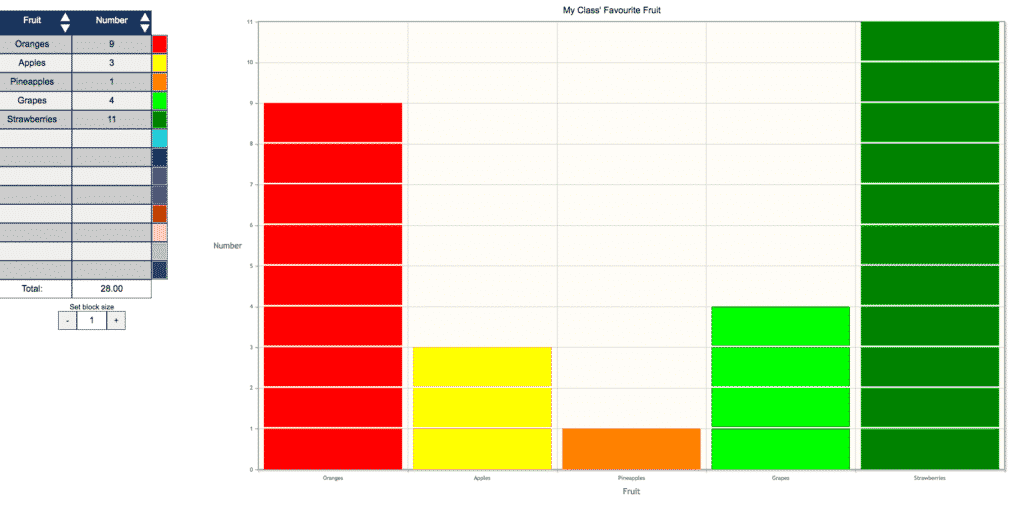Data and Information Literacy
4.2
Activity 1
Survey Time

This activity is very similar in Year 2 to the one in Year 1. Pupils are required to collect information through a tally chart, then create a block graph and pictogram with the data collected.
Pupils should create a tally chart (on paper) and collect answers to a question such as:
- Pupils' favourite fruit, mini beast, colour etc.
- How pupils come to school (car, walk, bus, bike).
- What they found on a mini-beast hunt.
Next, log in to a simple pictogram or block chart software such as 2Count / 2Graph (Purple Mash) or JIT (J2e in Hwb). Pupils should create a pictogram using data they've collected in tally charts in class.
For the pictograms, pupils will need to find a picture to go with each bar and set it to the correct number. Whether they are creating a pictogram or a block chart, pupils should enter the field names and graph title themselves.
Activity 2
Reading a Graph
This is a skill that you have been teaching in your Numeracy tasks for years and should therefore provide you with no difficulty. Present your pupils with a simple graph showing data such as:
- Favourite pets of 20 children.
- The number of birds of each species spotted on a bird watch.
- The colours of cars in the school parking lot.
Pupils will need to answer questions such as:
- What pet was most popular?
- How many white cars are there in the parking lot?
- Did they see more blackbirds or seagulls?
Enhanced Provision
Personal Surveys
Let them create their own surveys during their independent learning time. They could use the graphing software they used during the focus task, or you could have some blank tally charts and pictograms printed and laminated for them to create their own surveys.
